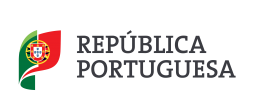The Digital Creativity Centre is the Knowledge Transfer Infrastructure that provides support, technical and creative solutions for the activities of the School of Arts and CITAR.
A few projects are highlighted here:
Artistic Residencies
Exhibitions
CITAR research and development projects
Other CCD and co-promoted research projects:
Yucunet
· YUCUNET- Establishment of a Yucatan-Cuba Network of MA programme in Contemporary Art and Cultural Management (Project 617486-EPP-1-2020-ES-EPPKA-CBHE-JP) (2020 - 2023)
POCI-01-0247-FEDER-024498 CHIC (Cooperative Holistic View on Internet and Content)
The CHIC project aims to develop, test and demonstrate a broad range of new processes, products and services that have a significant impact on the audiovisual and multimedia sectors. . These products will have a clear mobilizing effect on other important sectors of culture, such as cultural heritage, archives, books and publications or the performing arts.
CCD project PINFRA / 22133/2016 (upgrade to CCD)
The Digital Creativity Center (CCD) is a production infrastructure using state-of-the-art, state-of-the-art technologies, with certification attributed by leading brands in the audiovisual industry (such as Apple, Avid and Autodesk). The objective of the project is to strengthen the technical-scientific training of high-impact research infrastructures inserted in the National Roadmap for Research Infrastructures of Strategic Interest, allowing them to constitute a strategic pillar in the development of research of excellence at national and international level. In the case of the CCD project goal is to enable it in the area of digital media.
The CCD already incorporates a state-of-the-art infrastructure that has enabled and continues to provide an unique environment and support facilities for the development of an increasing number of artistic, research, public and business projects and events in its areas of activity.
Project: Sonic Interaction Design (sponsored by Fundação Calouste Gulbenkian)
The sonic aspects of interaction design are well studied, but outside academia, sound has been a neglected medium, with creators seldom aware of the extent to which it affects user experience. The project aims to explore both the utilitarian and artistic properties of the sonic medium as an agent for social interaction, coming from a background of science and technology of the arts. In particularly, it focuses on three very different contexts with varying levels of user engagement: the performing arts, medical recovery and classroom learning experience
Outcomes: 9 peer-reviewed article, 2 Master thesis, 2 PhD thesis, 2 workshops and 1 masterclass.
Project: The impact on new digital technology in documentary
Historically, documentary makers have been the leading innovators in driving film technology forward in order to overcome filming in difficult situations outside of the studio and to better convey actuality to the audience (McLane, Betsy A. A New History of Documentary Film. New York, 2012). Similar to the introduction of technologies such as video and cable TV, the arrival of new audiovisual technology (4k, HRD, new post-production tools, etc ) with relation to documentary filmmaking brings with it both huge potential and huge uncertainty. The project aims to study the impact of emerging audiovisual technology on documentary film.
Outcomes: two documentaries exploring the act of representing reality, using new technical possibilities, and two peer-reviewed article regarding technical advances (video formats, advances in video technology such as lenses, filters and lighting, editing techniques, image post-production and HDR technologies).
Project: Contemporary Animation: Tools, Constraints and Future Prospects (What lies beyond the Uncanny Valley)
The project will study the historical evolution of the tools and technologies available to animators, and their impact on the visual language, and the language of movement in Animation, focuses on Motion Capture Technology.
Outcomes: software tools for animators, short animated examples based on Motion Capture Animation, two peer-reviewed article, organization of an international conference on the subject, and the publication of a book chapter.
Project: 3D animation generation using MoCap data
Project will automate and enhance an animation pipeline obtained using MoCap data. The pipeline will integrate two animation software tools, Maya and MotionBuilder in one flow. The objective is to generate stylized character motion-specific animation sequences. The develop method will be evaluated by three MoCap data sets of various motion types and five commercial human shape models, and it should provide better visual stylized sequences when compared with current animation generation methods.
Outcomes: 3 peer-reviewed article, 1 Master thesis, 1 PhD thesis, a software application.




